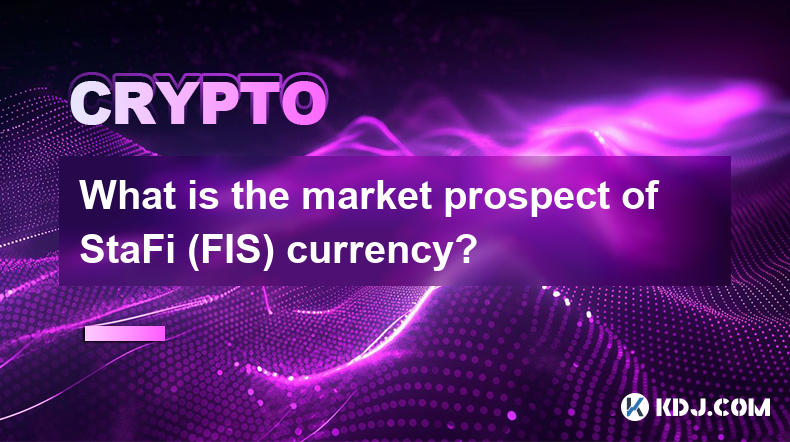-
 Bitcoin
Bitcoin $107,275.1551
-0.32% -
 Ethereum
Ethereum $2,485.3056
1.77% -
 Tether USDt
Tether USDt $1.0005
0.03% -
 XRP
XRP $2.2223
1.31% -
 BNB
BNB $657.7608
1.39% -
 Solana
Solana $156.3566
3.02% -
 USDC
USDC $0.9999
0.01% -
 TRON
TRON $0.2791
1.09% -
 Dogecoin
Dogecoin $0.1651
0.45% -
 Cardano
Cardano $0.5738
2.78% -
 Hyperliquid
Hyperliquid $40.2672
5.82% -
 Bitcoin Cash
Bitcoin Cash $517.5487
5.30% -
 Sui
Sui $2.7981
-0.40% -
 Chainlink
Chainlink $13.3500
-0.36% -
 UNUS SED LEO
UNUS SED LEO $9.1220
1.12% -
 Avalanche
Avalanche $17.9515
-0.32% -
 Stellar
Stellar $0.2361
-0.44% -
 Toncoin
Toncoin $2.9423
2.33% -
 Shiba Inu
Shiba Inu $0.0...01145
-0.68% -
 Litecoin
Litecoin $86.1693
-0.63% -
 Hedera
Hedera $0.1493
0.64% -
 Monero
Monero $315.1374
1.81% -
 Polkadot
Polkadot $3.4002
-0.73% -
 Dai
Dai $1.0001
0.03% -
 Bitget Token
Bitget Token $4.5413
-1.35% -
 Ethena USDe
Ethena USDe $1.0002
-0.01% -
 Uniswap
Uniswap $7.1733
-0.57% -
 Aave
Aave $274.0465
-0.23% -
 Pepe
Pepe $0.0...09810
2.24% -
 Pi
Pi $0.5101
-3.10%
What is the market prospect of StaFi (FIS) currency?
StaFi's innovative staking platform addresses liquidity challenges, allowing users to unlock the liquidity of their staked assets while maintaining staking rewards.
Jan 08, 2025 at 10:58 pm

Key Points
- Market Overview of StaFi (FIS) Currency
- Role of StaFi in the Staking Ecosystem
- Potential Benefits and Applications of StaFi
- Recent Developments and Updates in the StaFi Ecosystem
- Market Analysis and Future Outlook for StaFi
- Factors Influencing the Price and Value of StaFi
- Potential Risks and Challenges Facing StaFi
- Frequently Asked Questions (FAQs) about StaFi
Main Article
Market Overview of StaFi (FIS) Currency
StaFi (FIS) is a decentralized cross-chain staking platform that allows users to unlock the liquidity of their staked assets. Launched in 2021, FIS has quickly gained traction in the cryptocurrency community, with a significant increase in usage and market capitalization.
FIS operates on a proof-of-stake consensus mechanism, enabling users to delegate their staked assets to the network's validators. This allows users to earn staking rewards while maintaining control over their underlying assets. The protocol utilizes a unique "rToken" mechanism, which represents the staked assets and can be traded on decentralized exchanges.
Role of StaFi in the Staking Ecosystem
StaFi plays a crucial role in addressing the liquidity challenges associated with staking. Traditional staking mechanisms lock up assets for an extended period, making them inaccessible for other uses. StaFi's rToken mechanism allows users to unlock the liquidity of their staked assets without compromising staking rewards.
Furthermore, StaFi enables cross-chain staking. By integrating with multiple blockchain protocols, users can stake their assets across various networks and earn staking rewards in multiple cryptocurrencies. This flexibility enhances the earning potential and diversification of staking portfolios.
Potential Benefits and Applications of StaFi
StaFi offers several potential benefits and applications:
- Increased Liquidity: FIS provides liquidity for staked assets, allowing users to access funds for other investments or transactions.
- Flexibility and Cross-Chain Interoperability: Users can stake assets across multiple blockchains, expanding their earning potential and reducing dependency on specific protocols.
- Passive Income Generation: StaFi rewards users for staking their assets, providing a passive source of income.
- Asset Management: FIS allows for the management and monitoring of staked assets in a centralized and user-friendly interface.
Recent Developments and Updates in the StaFi Ecosystem
StaFi has made significant progress in the past few months, including:
- Mainnet Launch: StaFi launched its mainnet in January 2023, enabling the full deployment of its staking and liquidity services.
- Beta Launch of rETH-Venus: StaFi introduced a beta version of its rETH-Venus product, allowing users to stake ETH and earn rewards in Venus (XVS).
- Key Partnership with Binance: StaFi has established a partnership with Binance, one of the world's largest cryptocurrency exchanges, for joint product development and support.
Market Analysis and Future Outlook for StaFi
The market for StaFi remains nascent but has strong potential for growth. As the staking industry continues to expand, StaFi's innovative approach to unlocking liquidity and cross-chain interoperability positions the FIS token for continued growth.
Analysts anticipate that the increasing adoption of staking protocols and the growing demand for liquidity solutions will drive the demand for FIS. The project's partnerships with reputable entities and its team's expertise further enhance its long-term prospects.
Factors Influencing the Price and Value of StaFi
The price of FIS is influenced by several factors, including:
- Staked Asset Value: The value of the underlying assets that users stake on StaFi influences the demand for FIS.
- Number of Stakers: The quantity of staked assets on the platform affects the distribution of staking rewards and the overall liquidity of FIS.
- Market Conditions: General trends in the cryptocurrency market, such as market volatility and investor sentiment, can impact the price of FIS.
- Network Developments and News: Significant updates or developments within the StaFi network or ecosystem can drive price fluctuations.
Potential Risks and Challenges Facing StaFi
While StaFi offers promising potential, it faces some potential risks and challenges:
- Competition: StaFi competes with other staking platforms and liquidity providers, leading to potential market share challenges.
- Regulatory Uncertainty: Evolving regulatory frameworks for staking and decentralized finance projects could impact StaFi's operations and growth.
- Smart Contract Risk: StaFi's smart contracts, which manage the staking and liquidity mechanisms, are subject to potential vulnerabilities or bugs that could compromise the platform's security.
Frequently Asked Questions (FAQs) about StaFi
- What is the total supply of FIS? The total supply of FIS is 400,000,000.
- What are the use cases for FIS? FIS can be used for staking, governance, and as a medium of exchange within the StaFi ecosystem.
- How can I purchase FIS? FIS is available for purchase on various cryptocurrency exchanges, including Binance and Huobi.
- Is StaFi a secure platform? StaFi utilizes robust security measures, including code audits, smart contract testing, and industry-leading encryption standards.
- What is the future roadmap for StaFi? StaFi plans to expand its cross-chain staking capabilities, integrate with additional blockchain protocols, and explore new innovative applications for its platform.
Disclaimer:info@kdj.com
The information provided is not trading advice. kdj.com does not assume any responsibility for any investments made based on the information provided in this article. Cryptocurrencies are highly volatile and it is highly recommended that you invest with caution after thorough research!
If you believe that the content used on this website infringes your copyright, please contact us immediately (info@kdj.com) and we will delete it promptly.
- OKX and Binance Delist Trading Pairs: What's Going On?
- 2025-07-01 02:30:12
- Pepeto vs. Shiba Inu: Can the New Meme Coin Dethrone the King?
- 2025-07-01 02:50:11
- Saylor, Bitcoin, Holdings: Strategy's Crypto Empire Grows
- 2025-07-01 02:30:12
- Coinbase, Altcoins, and Listings: What's the Buzz?
- 2025-07-01 00:30:11
- Chainlink's Bullish Signals: Investors Bet on Long-Term Value
- 2025-07-01 00:50:12
- CICADA Finance Soars on BNB Chain: A TGE Deep Dive
- 2025-07-01 01:30:11
Related knowledge

How to customize USDT TRC20 mining fees? Flexible adjustment tutorial
Jun 13,2025 at 01:42am
Understanding USDT TRC20 Mining FeesMining fees on the TRON (TRC20) network are essential for processing transactions. Unlike Bitcoin or Ethereum, where miners directly validate transactions, TRON uses a delegated proof-of-stake (DPoS) mechanism. However, users still need to pay bandwidth and energy fees, which are collectively referred to as 'mining fe...

USDT TRC20 transaction is stuck? Solution summary
Jun 14,2025 at 11:15pm
Understanding USDT TRC20 TransactionsWhen users mention that a USDT TRC20 transaction is stuck, they typically refer to a situation where the transfer of Tether (USDT) on the TRON blockchain has not been confirmed for an extended period. This issue may arise due to various reasons such as network congestion, insufficient transaction fees, or wallet-rela...

How to cancel USDT TRC20 unconfirmed transactions? Operation guide
Jun 13,2025 at 11:01pm
Understanding USDT TRC20 Unconfirmed TransactionsWhen dealing with USDT TRC20 transactions, it’s crucial to understand what an unconfirmed transaction means. An unconfirmed transaction is one that has been broadcasted to the blockchain network but hasn’t yet been included in a block. This typically occurs due to low transaction fees or network congestio...

How to check USDT TRC20 balance? Introduction to multiple query methods
Jun 21,2025 at 02:42am
Understanding USDT TRC20 and Its ImportanceUSDT (Tether) is one of the most widely used stablecoins in the cryptocurrency market. It exists on multiple blockchain networks, including TRC20, which operates on the Tron (TRX) network. Checking your USDT TRC20 balance accurately is crucial for users who hold or transact with this asset. Whether you're sendi...

What to do if USDT TRC20 transfers are congested? Speed up trading skills
Jun 13,2025 at 09:56am
Understanding USDT TRC20 Transfer CongestionWhen transferring USDT TRC20, users may occasionally experience delays or congestion. This typically occurs due to network overload on the TRON blockchain, which hosts the TRC20 version of Tether. Unlike the ERC20 variant (which runs on Ethereum), TRC20 transactions are generally faster and cheaper, but during...

The relationship between USDT TRC20 and TRON chain: technical background analysis
Jun 12,2025 at 01:28pm
What is USDT TRC20?USDT TRC20 refers to the Tether (USDT) token issued on the TRON blockchain using the TRC-20 standard. Unlike the more commonly known ERC-20 version of USDT (which runs on Ethereum), the TRC-20 variant leverages the TRON network's infrastructure for faster and cheaper transactions. The emergence of this version came as part of Tether’s...

How to customize USDT TRC20 mining fees? Flexible adjustment tutorial
Jun 13,2025 at 01:42am
Understanding USDT TRC20 Mining FeesMining fees on the TRON (TRC20) network are essential for processing transactions. Unlike Bitcoin or Ethereum, where miners directly validate transactions, TRON uses a delegated proof-of-stake (DPoS) mechanism. However, users still need to pay bandwidth and energy fees, which are collectively referred to as 'mining fe...

USDT TRC20 transaction is stuck? Solution summary
Jun 14,2025 at 11:15pm
Understanding USDT TRC20 TransactionsWhen users mention that a USDT TRC20 transaction is stuck, they typically refer to a situation where the transfer of Tether (USDT) on the TRON blockchain has not been confirmed for an extended period. This issue may arise due to various reasons such as network congestion, insufficient transaction fees, or wallet-rela...

How to cancel USDT TRC20 unconfirmed transactions? Operation guide
Jun 13,2025 at 11:01pm
Understanding USDT TRC20 Unconfirmed TransactionsWhen dealing with USDT TRC20 transactions, it’s crucial to understand what an unconfirmed transaction means. An unconfirmed transaction is one that has been broadcasted to the blockchain network but hasn’t yet been included in a block. This typically occurs due to low transaction fees or network congestio...

How to check USDT TRC20 balance? Introduction to multiple query methods
Jun 21,2025 at 02:42am
Understanding USDT TRC20 and Its ImportanceUSDT (Tether) is one of the most widely used stablecoins in the cryptocurrency market. It exists on multiple blockchain networks, including TRC20, which operates on the Tron (TRX) network. Checking your USDT TRC20 balance accurately is crucial for users who hold or transact with this asset. Whether you're sendi...

What to do if USDT TRC20 transfers are congested? Speed up trading skills
Jun 13,2025 at 09:56am
Understanding USDT TRC20 Transfer CongestionWhen transferring USDT TRC20, users may occasionally experience delays or congestion. This typically occurs due to network overload on the TRON blockchain, which hosts the TRC20 version of Tether. Unlike the ERC20 variant (which runs on Ethereum), TRC20 transactions are generally faster and cheaper, but during...

The relationship between USDT TRC20 and TRON chain: technical background analysis
Jun 12,2025 at 01:28pm
What is USDT TRC20?USDT TRC20 refers to the Tether (USDT) token issued on the TRON blockchain using the TRC-20 standard. Unlike the more commonly known ERC-20 version of USDT (which runs on Ethereum), the TRC-20 variant leverages the TRON network's infrastructure for faster and cheaper transactions. The emergence of this version came as part of Tether’s...
See all articles

























































































